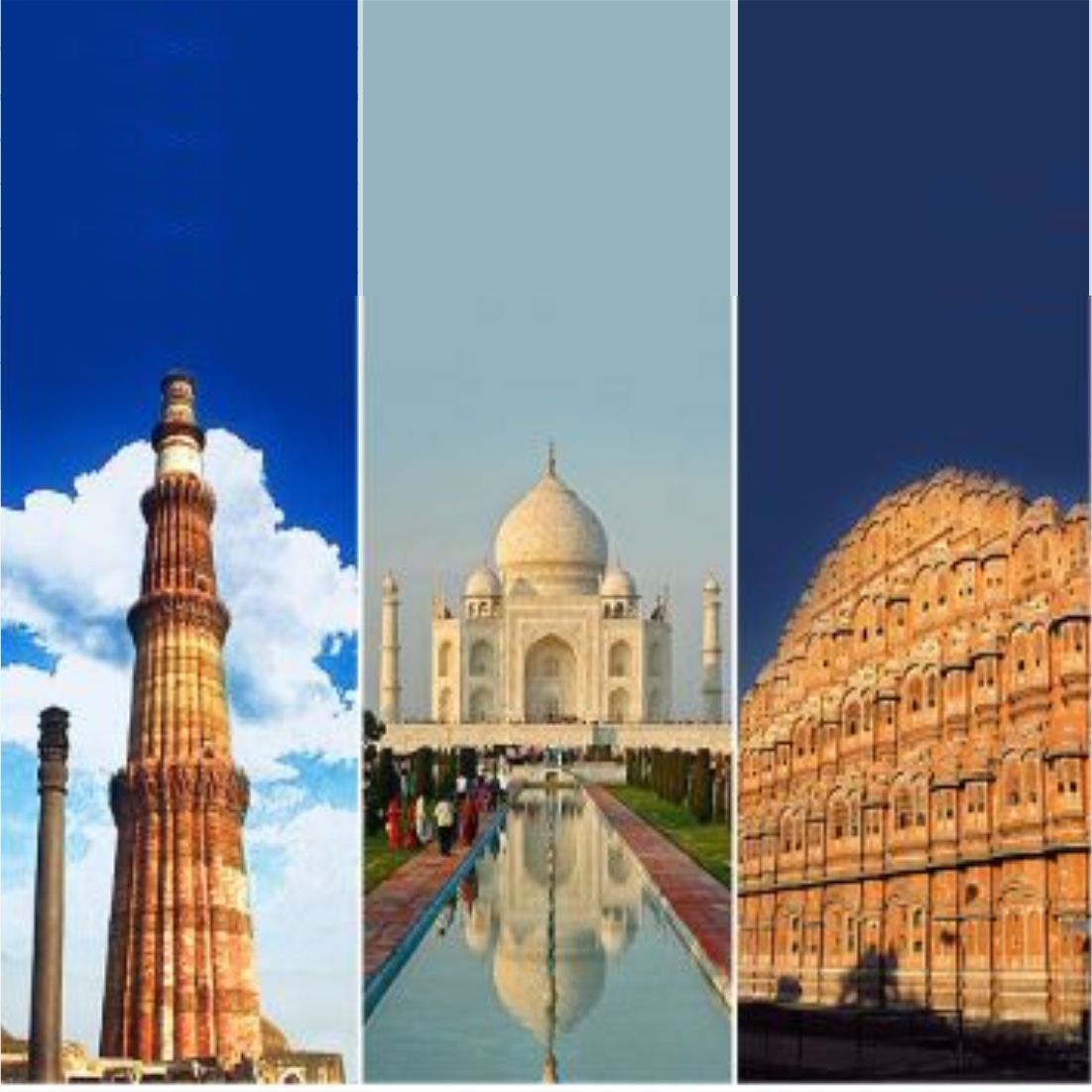Golden Triangle
The Golden Triangle Tour
The Golden Triangle Tour is one of the most popular travel routes in India, and for good reason. This tour takes you through three of the most historic and culturally significant cities in North India – Delhi, Agra, and Jaipur. Each city has its own unique charm and attractions, making the Golden Triangle Tour an ideal way to experience the diversity and richness of India’s cultural heritage.
Delhi
The tour starts in Delhi, the capital city of India. Delhi is a bustling metropolis that is a blend of ancient history and modernity. It has something to offer for everyone – from the magnificent Red Fort to the vibrant markets of Chandni Chowk, from the serene Lotus Temple to the majestic India Gate.
One of the must-see attractions in Delhi is the Qutub Minar, a UNESCO World Heritage Site. This towering minaret is a masterpiece of Mughal architecture and is surrounded by beautiful gardens. Another iconic landmark of Delhi is the Red Fort, a 17th-century fortress that served as the residence of Mughal emperors for nearly 200 years.
Delhi is also known for its street food, which is a culinary delight for food lovers. Some of the must-try dishes include the spicy chaat, kebabs, and the famous butter chicken.
Agra
The next stop on the Golden Triangle Tour is Agra, home to one of the Seven Wonders of the World – the Taj Mahal. This exquisite marble mausoleum was built by Emperor Shah Jahan in memory of his beloved wife, Mumtaz Mahal, and is a testament to the eternal love between the two.
Apart from the Taj Mahal, Agra is also known for its rich cultural heritage. The Agra Fort, another UNESCO World Heritage Site, is a magnificent red sandstone fortress that was once the seat of Mughal power. The fort contains many palaces, mosques, and courtyards, each with its own unique architectural style.
Another interesting attraction in Agra is the Tomb of Itimad-ud-Daulah, also known as the “Baby Taj.” This exquisite tomb is often referred to as a draft of the Taj Mahal, as it served as an inspiration for the design of the Taj Mahal.
Jaipur
The final stop on the Golden Triangle Tour is Jaipur, also known as the “Pink City.” Jaipur is the capital city of Rajasthan and is renowned for its rich cultural heritage and stunning architecture.
One of the most iconic attractions in Jaipur is the Hawa Mahal, a stunning five-story palace that was built in 1799. Its unique design, with 953 small windows or jharokhas, allows for a cooling breeze to flow through the palace, giving it its name “Palace of Winds.”
Another must-visit attraction in Jaipur is the Amer Fort, a magnificent fortress that was built in the 16th century. The fort is located on a hilltop and offers stunning views of the surrounding landscape. Visitors can also take an elephant ride up to the fort for a truly memorable experience.
Jaipur is also known for its handicrafts, including textiles, pottery, and jewelry. The city is home to many markets and bazaars where visitors can shop for unique souvenirs to take back home.
Conclusion
The Golden Triangle Tour is a great way to experience the rich cultural heritage of North India. From the bustling markets of Delhi to the exquisite marble mausoleum of the Taj Mahal in Agra and the stunning architecture of Jaipur, this tour has something for everyone.
Whether you are a history buff, a foodie, or a shopaholic, the Golden Triangle Tour will leave you with memories that will last a lifetime. So, pack your bags and get
-
Destination



